Inspired by Arkansas
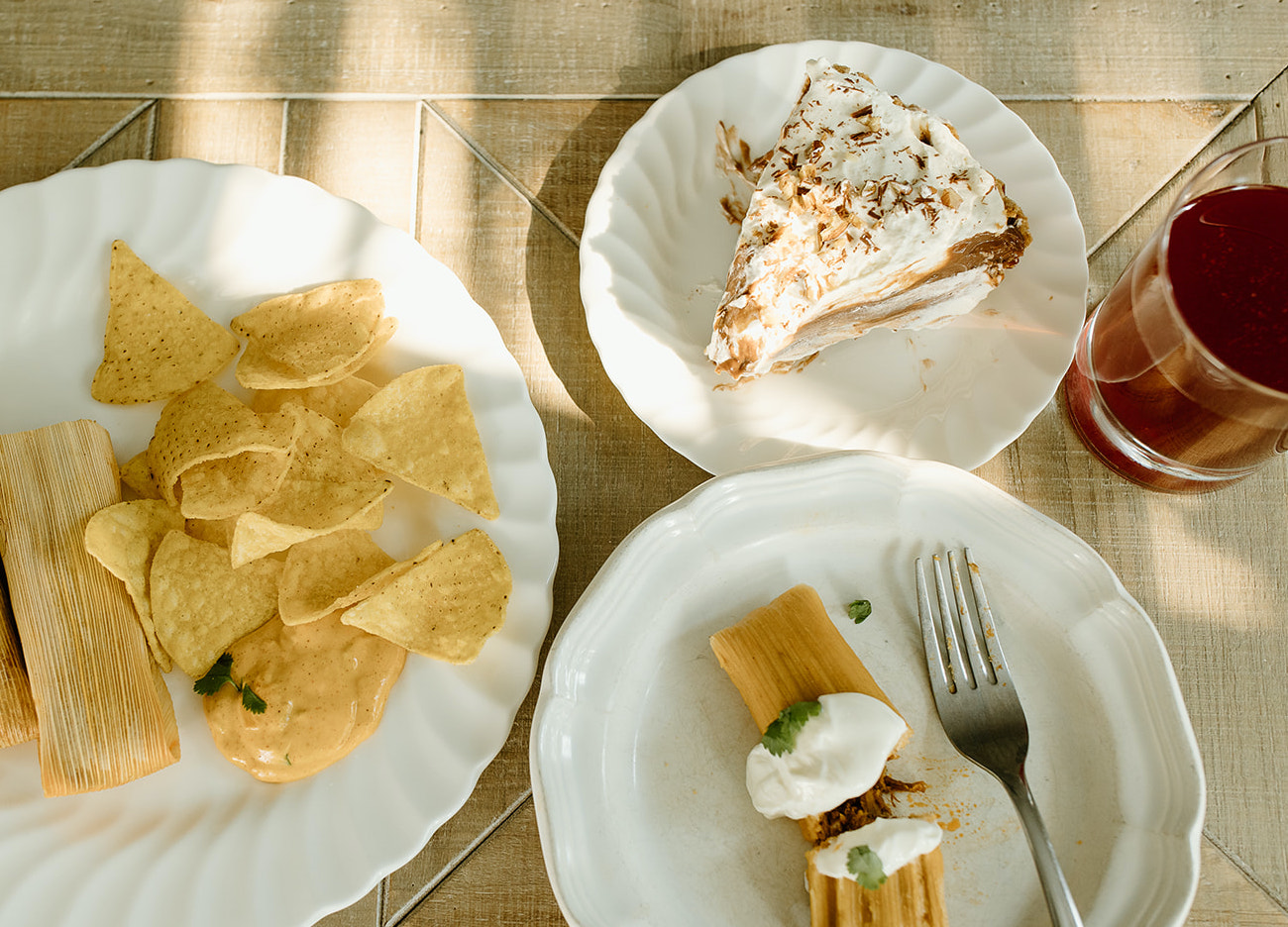
It may not look like much, but this meal was packed full of great flavors–a mix of Mexican influence and classic American tastes.
THE MEAL
(Click on the links above to jump to that part of the post!)
When I told people what I was making for this Arkansas-inspired meal, the reactions I got were mainly, “Really? Tamales and queso? For Arkansas?”
I was kind of surprised too! I thought Arkansas, located right in the middle of the South, was a mainly fried chicken kind of place, cuisine-wise. But this meal had some great Mexican inspiration in the tamales and cheese dip. Every dish in the meal was easy to throw together but had layers of flavor that made it exciting to prepare and a joy to eat.
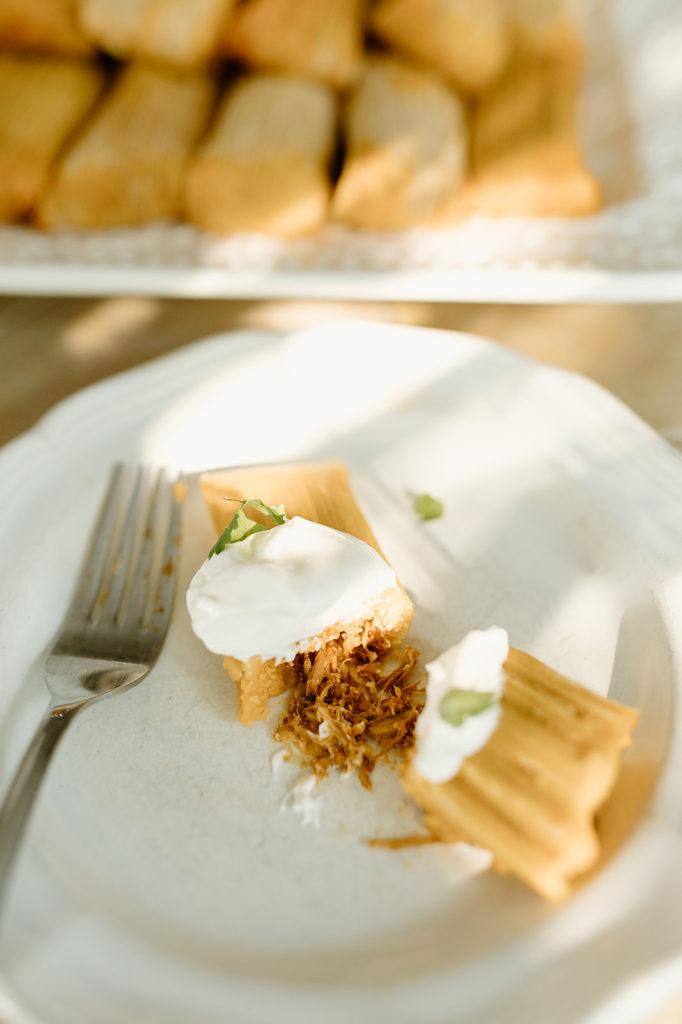
PORK TAMALES
Tamales are very popular in the Arkansas and Mississippi area. They’re commonly found in many local restaurants and also sold in road-side stands. There are a few theories about how they came to the region, and all of them could be true, but mainly they became popular when Mexican migrant workers came to Arkansas to work the cotton fields during the Great Depression. Tamales were a hot, portable meal easy to make with local ingredients. They quickly caught on in the area and spread to other states, including my native Utah, to the point where now tamales are a traditional Christmas dinner for latinos and non-latinos alike in the United States.
Now, these pork tamales I made aren’t authentic to Arkansas necessarily. The area’s signature tamale is a Mississippi Delta hot tamale, made with cornmeal and beef and simmered in a spicy red sauce. But when I was doing my internet research, it was clear that there are a great many ways to make tamales in Arkansas, so I tried my best and went with what seemed most tasty to me. 🙂
I chose pork instead of beef as a kind of nod to the Arkansas razorback hogs. You probably know the razorback as the mascot of the University of Arkansas, but they’re a real feral pig descended from European wild hogs brought by Spanish explorers in the 15th century that bred with domestic pigs. Today, there are an estimated 200,000 razorback hogs in the forests of Arkansas!
Anyway, I made my tamale filling using a slow-roasted pork shoulder and a homemade chile sauce, similar to what I used to make the New Mexico carne adobada but not as spicy. It smelled and tasted amazing!
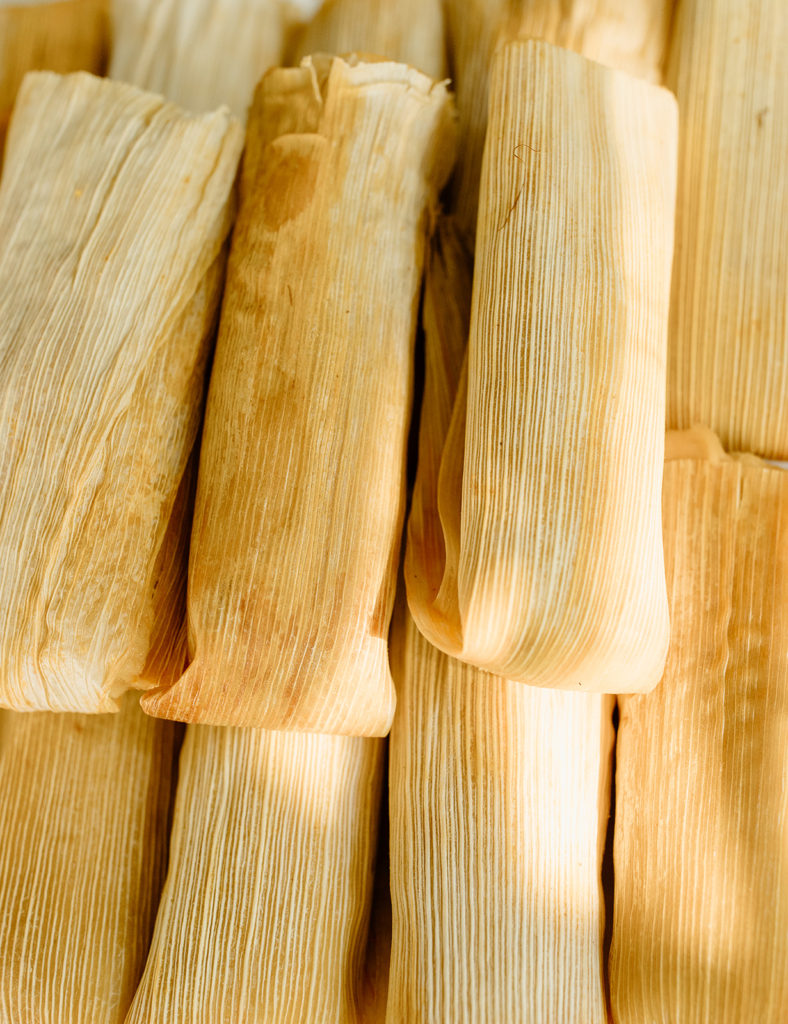
Making the outside of the tamale–the “masa”–was a brand-new experience and the most difficult part of the meal for me. I did so much reading and YouTubing to prepare for it, and I still messed up a bit. I fundamentally misunderstood the difference between prepared masa and masa harina, so when my recipe called for 5 lbs of masa, I tried using 5 lbs of masa flour. I had to add a ton more liquid than I expected to get it to a spreadable consistency, and even then I didn’t quite get it thin enough. And then, since I had so much masa, the other flavorings were spread too thin. So the breading turned out kind of dense and cloying, unfortunately, when it should’ve been soft and fluffy. But now I know what I did wrong, and I adjusted the recipe accordingly, and I’m itching to try it again!
Even with the masa not being quite right, we had a good time assembling the tamales using corn husks! It wasn’t as hard as I expected it to be, and they looked so pretty all lined up on our baking sheet. After assembly was done, we stood the tamales upright in a steamer basket and steamed them for a good hour to cook the masa.
They turned out pretty good! They needed a little sour cream or other topping to make the masa more flavorful, but people tend to eat tamales smothered in sauce or chile anyway, so that wasn’t too bad! The pork filling was awesome, and now that I’ve made tamales once, I really want to make them again! My aunt actually discovered my great-great-grandma Martje’s beef tamale recipe and shared it with me, so I’m sure I’ll be making those for a family get-together in the near future.
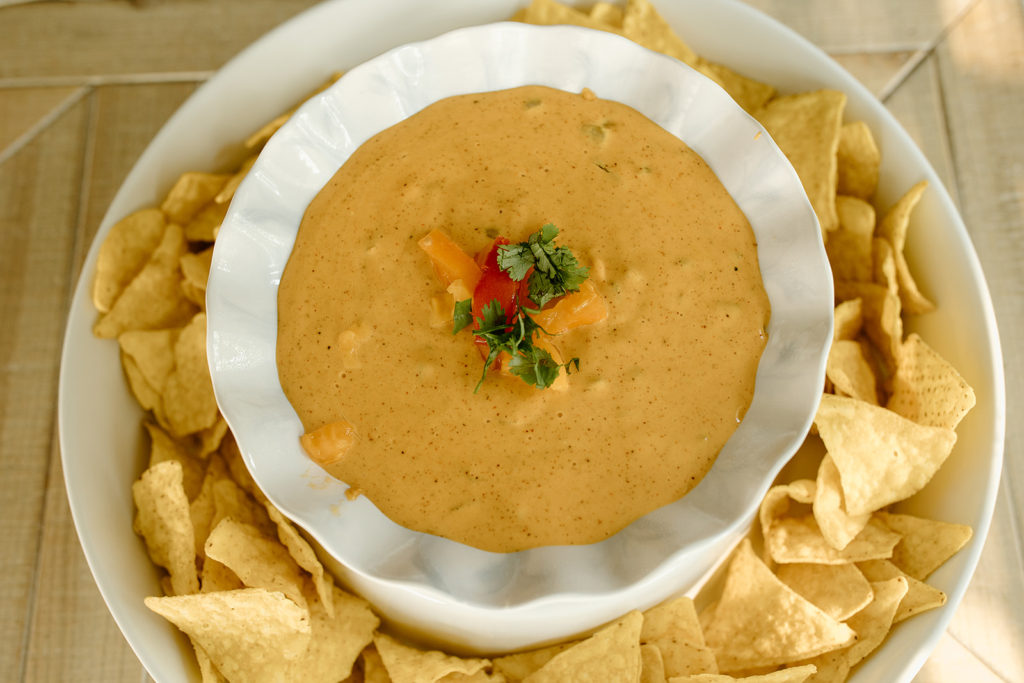
CHEESE DIP
Tamales are popular in Arkansas, but the iconic Arkansas dish is actually cheese dip, also known as “queso.” Cheese dip is to Arkansas what barbecue is to Texas. It’s more popular in Arkansas than anywhere else in the country. There’s a World Cheese Dip Competition in Little Rock every year!
I don’t really want to call this recipe queso, though, because there is a real difference between authentic Mexican queso and what they call queso in Arkansas. What makes Arkansas cheese dip unique is that it’s made using processed cheese like Velveeta so that it stays creamy and smooth instead of clumping when cooled. That makes it a great party and restaurant food that people can enjoy all evening. Though Mexican in origin and said to have been invented in Texas, it’s widely believed that Arkansas cheese dip was developed by Blackie Donnely, an owner of the Arkansas-based Mexican Chiquito restaurant chain. If he didn’t invent it, he at least popularized it!
This was a very simple but extremely flavorful recipe. All you have to do is throw cubed Velveeta, sour cream, diced green chiles, and taco seasoning in a small saucepan and heat it through until everything is combined and smooth! It tasted so good with tortilla chips and was kind of nostalgic for me, because my sister used to make something similar as an after-school snack when we were in high school. I’ll definitely be making this again, probably for game day get-togethers!
I wanted to make rice as another side dish, but we already had too much food. Arkansas is number one in the country for rice production, harvesting almost 9 BILLION pounds each year!
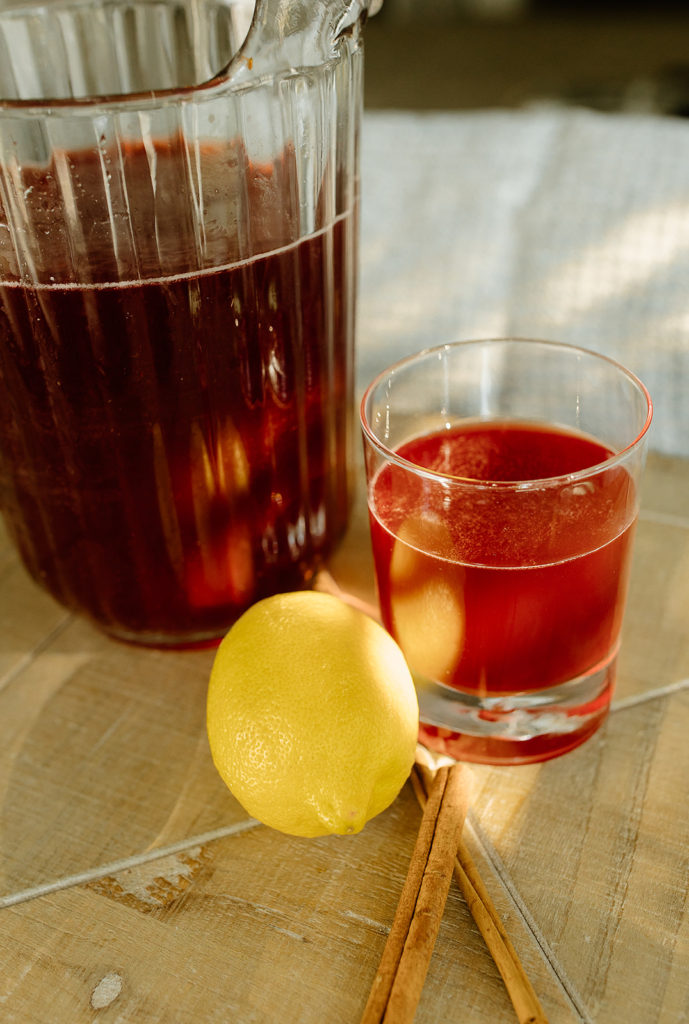
POMEGRANATE CINNAMON PUNCH
Milk was designated the official state beverage of Arkansas in 1985, but as I said in the Oklahoma post, I really don’t like drinking milk by itself. I don’t think I’m lactose intolerant, but I’m definitely lactose averse. It’s just not my fave.
So instead, I looked for inspiration from Arkansas’s favorite cocktails. Their most iconic is the Arkansas Razorback, but since it’s a mixture of vodka, rum, and coffee–all things I don’t drink–I went a different direction. I’m giving this drink a generic name, but it’s supposed to be the virgin version of the Akansas Avalanche.
The flavors for this drink are pomegranate, lemon, and cinnamon. I used sparkling lemonade as the base, added a couple cups of unsweetened pomegranate juice, and then made a simple cinnamon syrup and stirred it all together. It turned out really good! It was a little too sweet, so maybe I would make it with sparkling water and lemon instead of bottled lemonade next time, but it was tart and spicy and pretty darn Christmasy! This whole meal would actually be perfect for December.
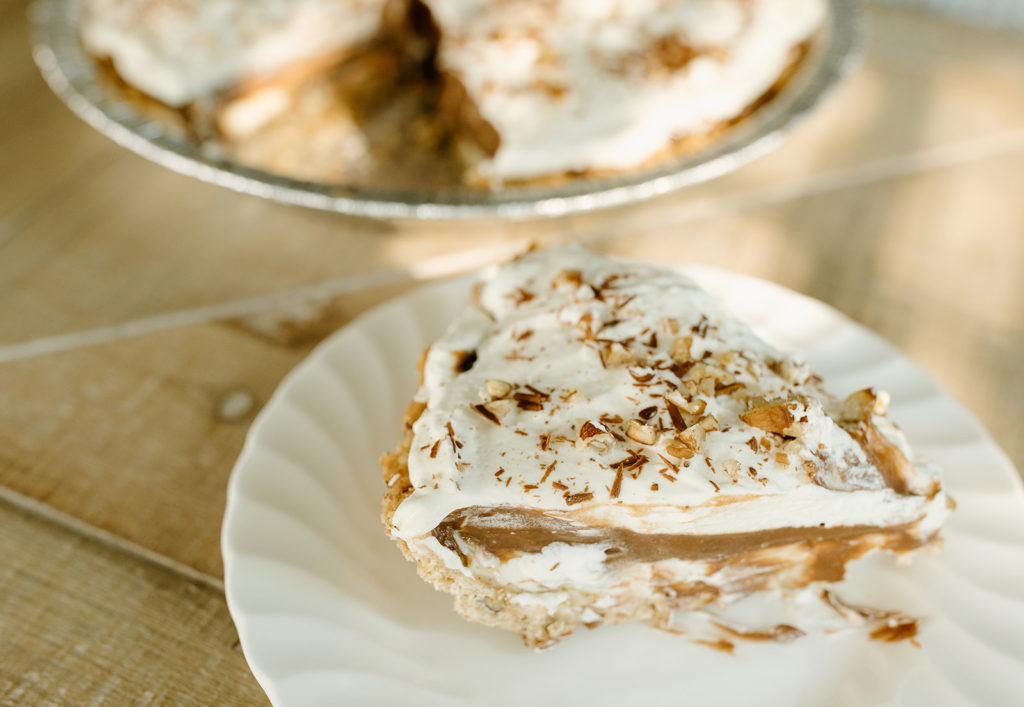
POSSUM PIE
One of Arkansas’s most iconic desserts is the possum pie, so called (it’s theorized) not because it’s made with possum, but because it pretends to be something that it’s not. Before you cut into it, it looks like a vanilla pie, but inside it actually has a chocolate pudding layer on top of a white cream cheese layer on top of a cookie-like pecan crust. If you ate it from the top down, it would be a fun surprise to discover what’s hiding inside!
This pie was awesome. I absolutely loved the flavor combination, and so did my family. It was rich without being overpowering, and has been added to the list of make-again recipes.
It made me laugh, though, that once again I made a pie for this challenge, but once again, I didn’t use pie crust the traditional way. I’ve made pie crust for the peach galette and the fried apple pies, but for this actual pie, it used a pecan cookie crust. Haha! Someday I’ll make a traditional pie, I promise!
The bottom layer of the pie was mostly cream cheese, with a little powdered sugar and vanilla mixed in. The chocolate layer was pudding made from scratch, which was so much easier than I expected it to be, and so yummy! I guess because pudding packets are so EXTRA simple to use, I didn’t know that making pudding from scratch is pretty simple too. It was almost like magic how one minute I was stirring soupy chocolate liquid, and the next it thickened into perfect pudding. I rarely have milk on hand, but if I ever do, I’ll have to make myself some pudding from scratch.
On top of that, I heaped some homemade whipped cream and topped it with chopped pecans and shaved chocolate. I wanted to make those pretty chocolate curls that you always see on recipe blogs, but apparently you need to actually temper and roll chocolate to achieve that. Bummer. I’ll need to learn how to do that someday!
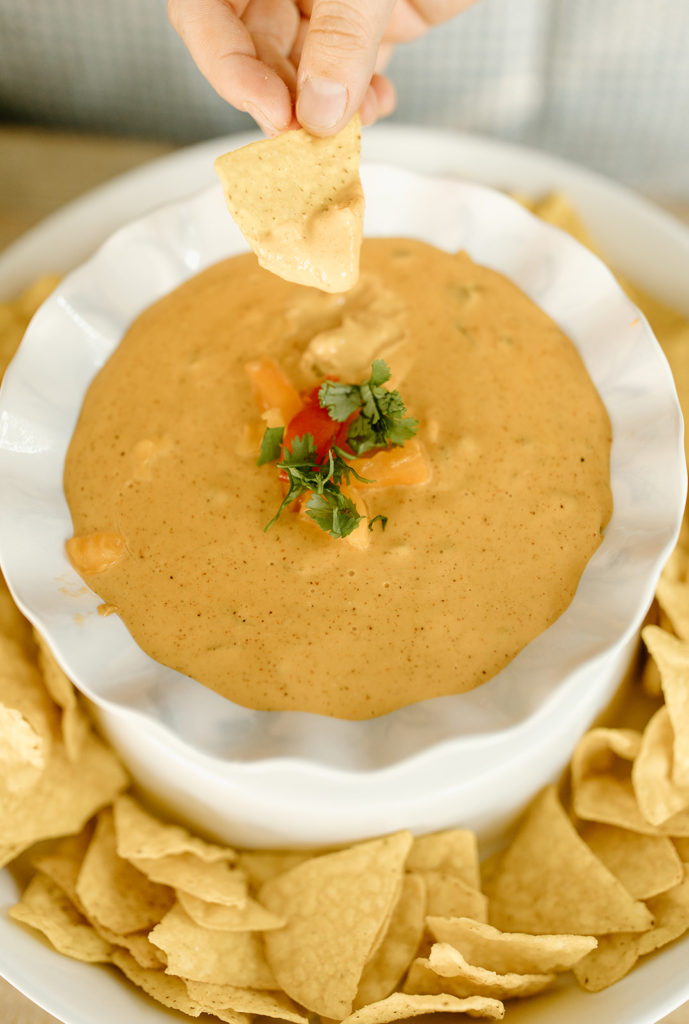
CONCLUSION
In conclusion, this meal packed a punch of flavor. The ingredients and preparation were simple, but everything was so rich and filling and super tasty. I’m confident that I could try and succeed at making tamales again, and all the other recipes in this meal are going in my “make again” box, whether on their own or all together to make a great Christmas meal!
So how’d I do? Let me know in the comments if you have any suggestions for improvement, and be sure to tune in next time for my take on a meal inspired by Louisiana! If that’s where you’re from, what do you think I should make to represent your state? Bonus points if you have reliable recipes or pro tips before I make the attempt! Thank you for reading!
